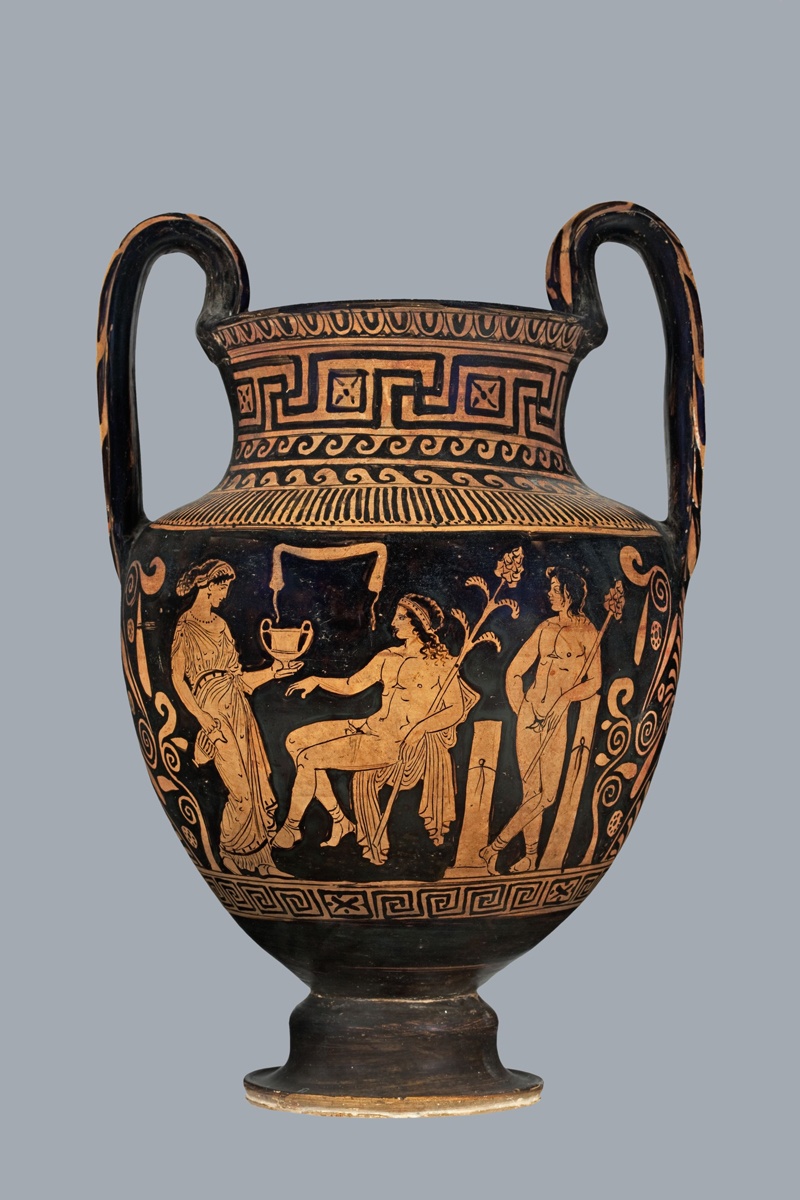The red-figure technique for decorating pottery was introduced in Athens in circa 530–520 B.C. Over the following century, Athenian potters remained the unrivalled masters of this art, until around 430 B.C., when the devastating war with Sparta caused the best vase painters and potters of Athens to leave their city. They settled in southern Italy, and continued working in the Greek cities established in the coastal region. One of the largest and earliest Greek centres of vase painting in Italy, and the birthplace of its Lucanian school, was Metapontion (present-day Metaponto), the most significant Greek city in Lucania (the present-day province of Basilicata). As excavations of the city’s pottery workshops suggest, the production of red-figure vases began here somewhat earlier than in Taranto, initially copying Athenian prototypes, but gradually becoming independent. The Lucanian school maintained strong relations with the Apulian school of Taranto, coming increasingly under the latter’s influence. Even though the originality of Lucanian vase painting faded by the middle of the 4th century B.C., until then a number of identifiable artists were active, especially in Metaponto.The last notable follower of the pioneering Lucanian painters was the Brooklyn-Budapest Painter, named for the two museums preserving distinguished examples of his work from the distinctive earlier and later phases of his art. He was active between 380–360 B.C.; the Budapest vase, representative of the later period of his art, was created circa 370–360 B.C. In the 19th century, the shape of the vase became known as nestoris, based on the mistaken assumption that it resembled Nestor’s cup in Homer’s Iliad. In fact, the shape was a variation on the local vase (trozzella), produced by the Messapian population inhabiting the Salentine peninsula, the southeastern corner of Italy, and was only made in Lucanian workshops. The originally angular ware decorated with discs (hence the name trozzella) gradually became Hellenized and lost its indigenous traits. The last stage of this development is represented by the Budapest vase. The figures of three draped youths are painted on the back of the nestoris, in keeping with the custom brought over from Athens. However, the details of these conventional figures provide us with means to identify the decorating artist. The main subject of the vessel naturally appears on the front, with a scene representing three figures. A young Dionysos sits in the middle of the scene, a thyrsos in one hand, the other hand extended towards a clothed female figure facing him. The woman holds an oinochoe in her lowered right hand, her left hand extending towards the god a kantharos, his favourite drinking vessel. The two columns to the right of the scene might be interpreted as tombstones due to the fillets tied around them. The figures are thus placed in the sphere of the necropolis, while the satyr leaning against one of the columns only adds to the Dionysiac atmosphere of the scene. The picture most likely shows the acceptance of the deceased, here represented by the woman, among the ranks of the god’s followers, who, as initiates of his mystery, have joined his eternal service. The vase was thus originally intended to be placed in a tomb.Following JÁNOS GYÖRGY SZILÁGYI
hu

